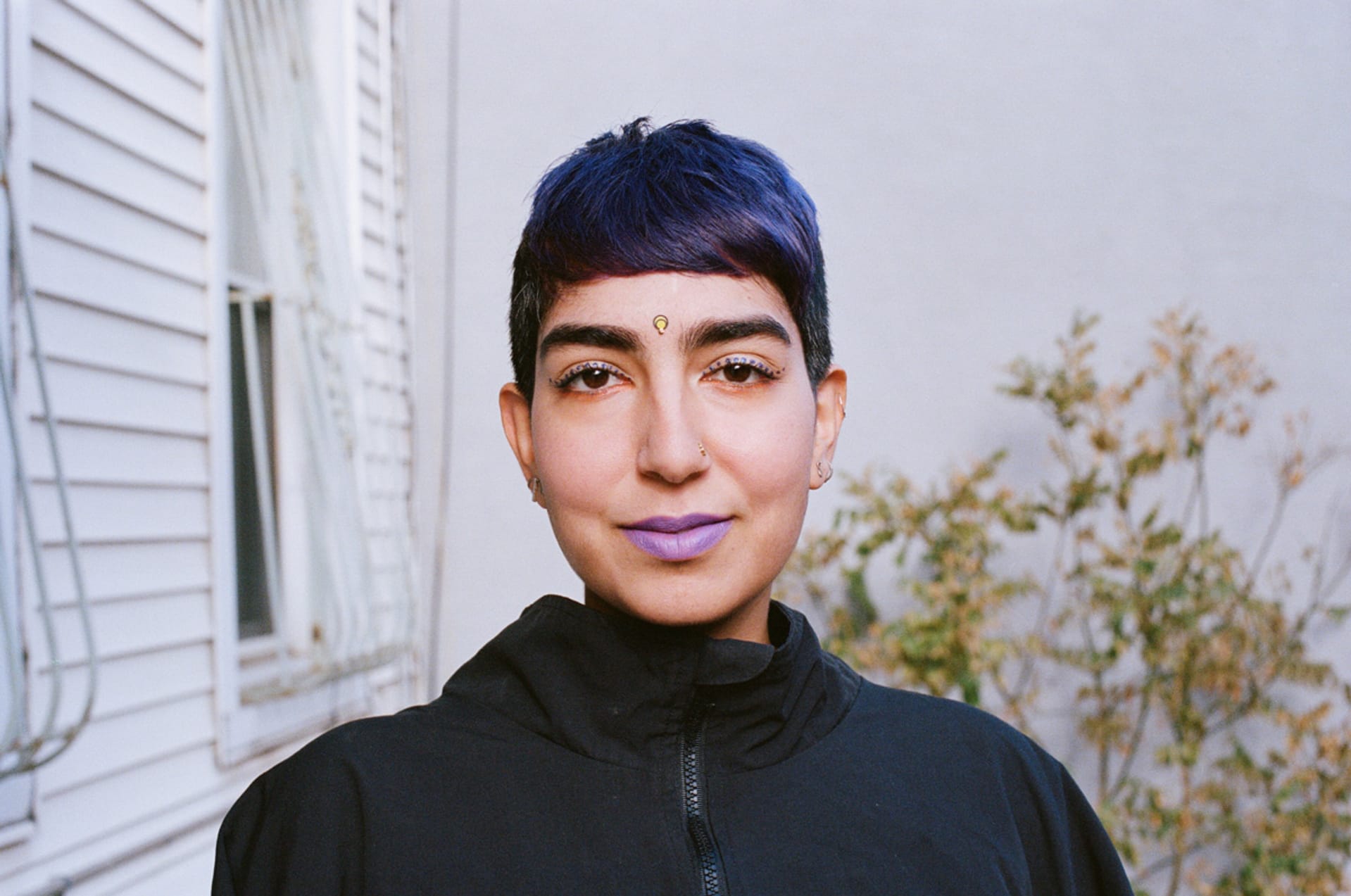
An Interview With rrao About The Healing Power Of Reiki Energy Work
rrao is a New York-based producer and Reiki practitioner who regularly hosts energy workshops in the city.
There’s a lot of energetic healing potential in the dance floor, and so it makes a lot of sense that someone involved in its production would also seek out wellness methods with similar means of action. rrao is a New York-based DJ and producer who just last year had their first track released on The Bunker, perhaps that city’s most iconic techno imprint.
Beyond their dance floor duties, they also conduct Reiki sessions in New York. Reiki is a Japanese healing method that uses various techniques to manipulate the body’s vital force (also sometimes referred to as qi, energy field or aura). TEB contributor Elizabeth Claire Herring met up with rrao to find out more about Reiki and the sessions that rrao leads.
So before we delve into all the details of your practice, could you run us through a quick beginners guide to Reiki?
It’s important to honor that it is a Japanese practice. The word Reiki can be broken down to mean intelligent universal energy. In its manifestation, the practitioner has been attuned to receive that energy—by clearing out parts of themselves so they can act as a channel. In my experience, most of the energetic clearing happened in the first and second chakras, and in the palms.
In a typical Reiki session, practitioners use light touch, or hover their hands over the receiver’s body. It’s important to note there is no manipulation of the tissue, although for some people, it may feel that way at times, like a muscle releasing or some kind of shift occurring. It’s not bound to the physical realm, though, and some practitioners perform Reiki at a distance as well. This technique is what inspired me to start doing larger group sessions.
Reiki can meet people at any level of their being. For some, it’s highly emotional, and for others, it’s more physical or mental. I’ve had all sorts of experiences with people. A lot of clients that come to me are working through life changes or mental health issues like anxiety and depression. I’ve had people come to me for physical ailments, like back issues for example. One of my favorite experiences was when someone came to me with lower back pain. They were also seeing a chiropractor and another specialist, but didn’t share with me what they already knew about their condition beforehand. During our session, it was revealed to me that their hips were uneven among other things, and they confirmed I was correct afterwards when we discussed what I found. Those are the instances that are really assuring to me about Reiki and its legitimacy.
People say you can cure cancer or set bones with Reiki, but if that’s not my personal experience, I’m not going to say that. I do think it’s limitless, but it’s something you’re continuously growing as you deepen your practice.
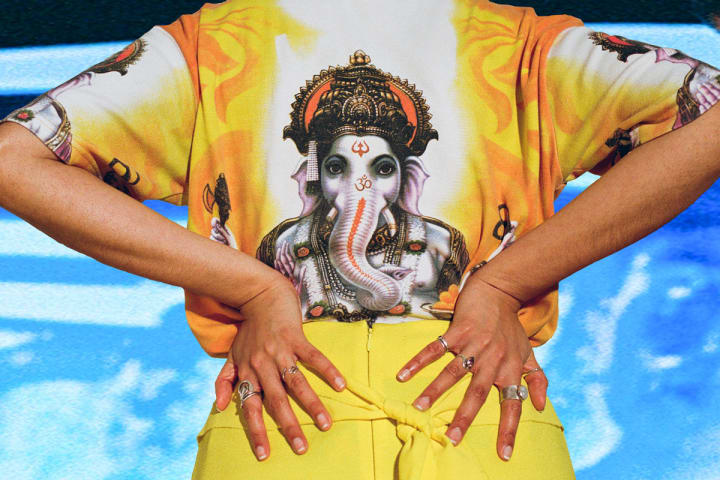
I want to ask you how you explain your practice? how would you explain what you do and why you combine Reiki and music?
My work manifests in multiple ways. The best examples being when I channel Reiki while performing or during the group sessions that I host. I started doing these sessions at venues in NYC after Kiki (Catherine Eberhardt) invited me to do one for her series of Body Music Therapy events. Kiki teaches yoga (among other offerings), and her inspiration for these events is to change the dynamic of typical sessions by bringing different DJs to perform in tandem, instead of playing cheesy generic new age music. She takes it to a different level and creates a space that’s more welcoming and enjoyable for our community.
The intention or theme for my group sessions can differ, but there are certain things that keep the structure. I’ll always start with a guided meditation and follow up by playing a mix during the Reiki session that I recorded, both of which I’ll create day of. I develop the meditation and mix by calling in Reiki and feeling out what will best serve that particular group.
I always include a visualization for people to protect their energy, no matter what changes in the meditation. This emphasis on protecting one’s physical and energetic space isn’t something I experience a lot in healing spaces, whether it be yoga, meditation or otherwise, and I think it’s really important.
The meditations are basically a guided visualization. We might focus on specific parts of the body, bring colors into parts of the body or connect different body parts to each other to rebalance energy. Maybe I’ll bring in natural elements like the moon or sun to ground people and move them into a different headspace where they can better connect with themselves and open themselves to receive.
My intention with anything I am doing is to have it fueled by Reiki, my connection to my spirituality, the deities I work with and my ancestors. I actively channel and live out of that energetic space while I am performing, and generally I have found it to be most impactful when I am performing experimental music in a more formal concert style setting. It’s been more challenging for me to imbue that same energy in the dance sets, but it’s just a matter of perspective.
Where was your last session and when?
That was at Nowadays in August. There were seven people that came—I usually cap the groups at 12 because it’s a lot to handle. I love it but it’s intense.
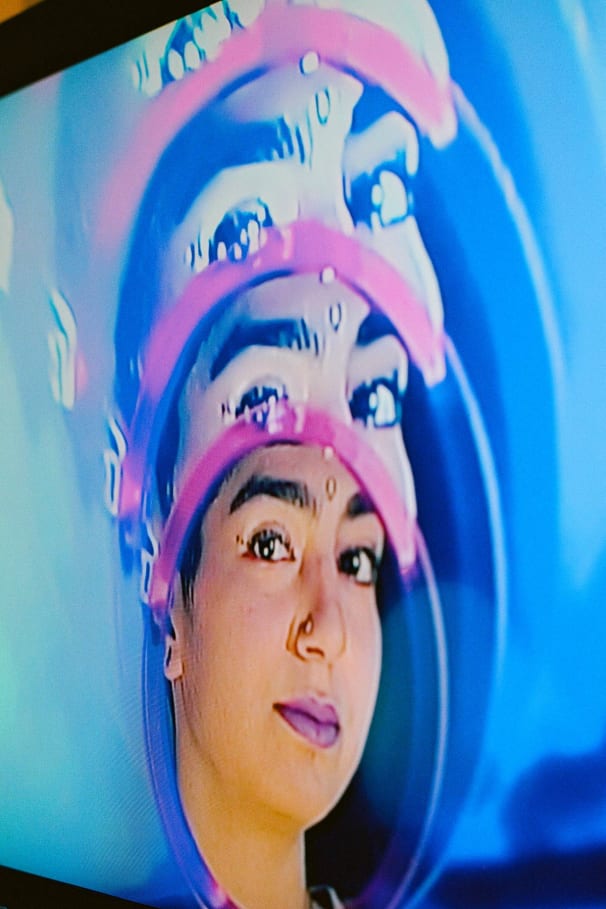
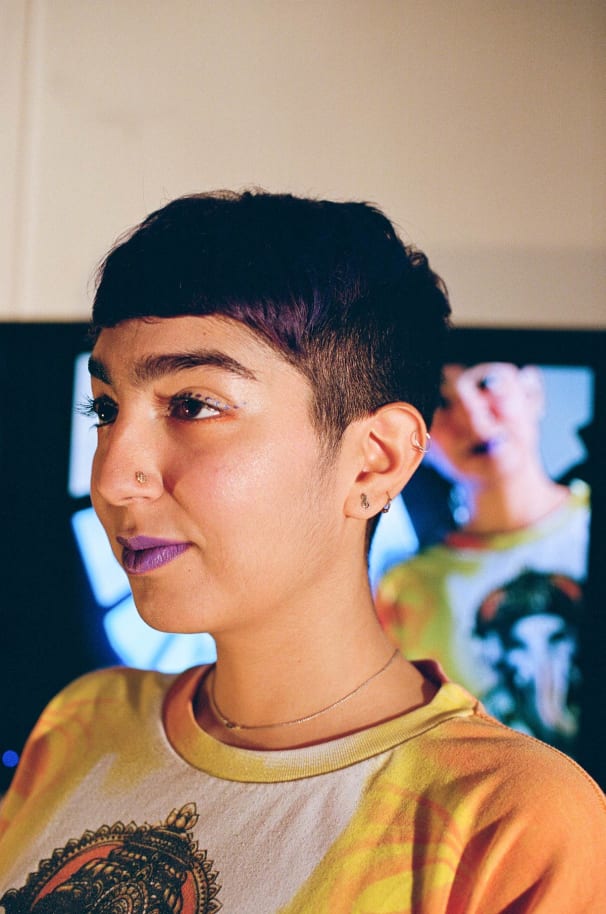
I bet. Are the group sessions hands on?
Yes, depending on the group size. In smaller group sessions, I still go around and have hands on time with each person. If the group is large, I won’t be able to do that, but that wouldn’t really change anything aside from the intimacy of it. I always check in with people at the end of the session, and even in the moments without hands on practice, they still feel held by the energy.
You mentioned that it can be more difficult for you to channel Reiki during more dance-focused sets. What do you mean by that? Could you explain a bit some of the challenges that you experience combining energy work with dance music?
I find it challenging to work in an atmosphere that is anchored to alcohol and hedonism. I always thought I could work beyond this environmental obstacle, and I think I’ll be better able to with time. In more formal settings, like concerts, or the small group sessions, I am really able to embody what I am doing and am able to communicate my energetic intentions more directly.
That being said, I still feel really connected to the dance music community, and I do believe that dance music is healing. I never want to make people feel like I’m judging them for drinking or doing drugs; it can be a very important process of self discovery and everyone has different stages in their experience. I’m simply coming from a personal perspective of how these environments feel for me now as opposed to how I felt about club spaces five years ago.
Part of the reason why it’s challenging is because, to access these energetic dimensions and parts of myself, I’m allowing myself to be hyper sensitive. I no longer drink or do drugs, I don’t even drink caffeine! So I am a ripe little baby you know! I go into these spaces and try to perform and open myself for that space, and I feel other people. It’s going to take practice bringing my work to this realm because I do feel overwhelmed in a room full of hundreds of people that are all drunk or high. I’m bridging a gap to something I don’t like to invite into myself anymore, and I need to figure out how to navigate that. I have to figure out what that means for me, and if I’m willing to navigate it, or if it makes more sense to perform in more formal spaces.
What are some of the ways you’ve been trying to work past these challenges?
I’ve been working more with visuals that include footage I filmed during my walk in India. I feel it brings everyone in the room to a similar energetic space. Of course with music the audience is in a new space together focused on one thing, but I feel that the visuals help solidify the experience and create a more focused, intentional space instead of a party environment. It’s easier for me to channel and be fueled by Reiki in that kind of space.
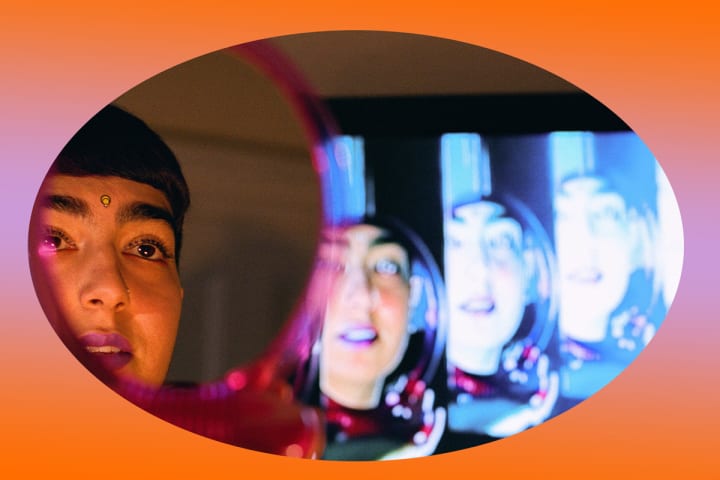
It seems like a lot of your spiritual transitioning was activated when you did the walk and progressed since. What was the walk in India, and how did that initiate your journey with Reiki?
I have always had a meditation practice, but the walk was a catalyst for my energetic growth.
My good friend, Sri M, planned this walk called “The Walk of Hope” in an effort to unite the country beyond religion, caste, creed etc.—to plant seeds of peace everywhere that we went. It was a year-and-a-half-long trek across India starting from the Southern tip of the country in the city of Kanyakumari, Kerala and ending in the Himalayas. The group basically walked north along the western coast weaving in and out of major cities, like Bangalore for instance. I was there for four months and walked a total of 2,200 kilometers.
The trip was deeply transformative for me, and it gave me a lot of time to reflect on my spirituality and deepen my connection to my ancestry. Growing up, I went to India almost every year, as both of my parents grew up there, but I’d only experienced it through the lens of my family life—mainly in Chennai and Bangalore. It was amazing to see so many new places and connect with so many different kinds of people.
I was disconnected pretty much the whole time. Of course I had a phone, but I wasn’t actively sharing my experience, it was something insular and intimate for myself. It was a time when I could engage in practices that aren’t very practical in every day life. I took a vow of silence for 11 days, and those types of experiences really opened things up for me that I have never been able to replicate, but still carry with me. They changed my view on how I use my energy and what levels of my being are communicating with people beyond words, which I think is very tied to making and sharing music.
So what brought you to Reiki, which is Japanese? How does that factor in?
It’s definitely important to honor that, and it’s something I’ve struggled with. I looked into whether there is a formalized Indian method I could learn instead, but I haven’t found one. People talk about things like “pranic healing”, but as far as I know, most of these sorts of things are left to Gurus.
Reiki came about after I began to feel overwhelmed by the level to which I was opening up, which was almost making me upset in a way. I had to find a way to navigate my openness because I’d go outside and feel overwhelmed by people in a way I hadn’t experienced before. When I found Reiki, I was looking for a way to protect my own energy as I went deeper on my path.
The day after I learned about Reiki, I saw that a person in New York named Corinne Feinberg was giving a free talk about it. When I went to the meeting and experienced it first hand, I felt it so profoundly and knew it was something I wanted to explore for myself. I studied with Corinne and completed all the levels of training through my mastership with her. Now I’m training other people, and the cycle continues.
I’m deeply grateful for my connection to Reiki because it allows me to share truths and provide aid in a way that I’ve never been able to with words. It’s so beautiful to me when I have sessions with people and they are able to feel the shifts in their consciousness as I am working on them. I feel it’s the most fulfilling and useful thing I can do with my time!
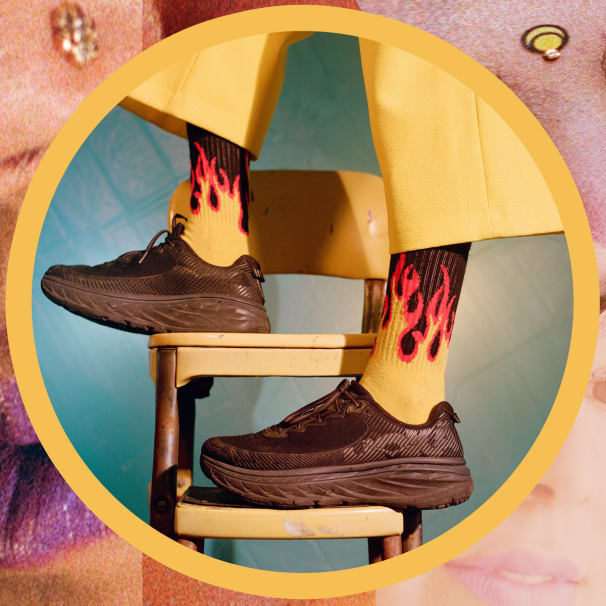
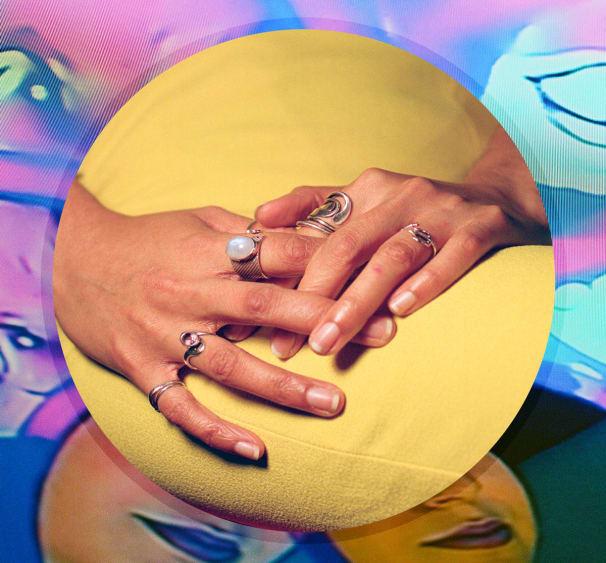
How does Reiki come into play while you are working on your upcoming album?
As of late, I’ve been in a never-ending loop of preparing for live sets, but I have plans to release an album next year.
I always imagined I would be channeling the whole time while making my album, as in stepping aside and taking guidance for what needs to happen, instead of intellectually deciding what needs to be made. More of a “I feel that and go there” type of work, like when I made my track, “Anita”.
That was very much in a flow state, but it was much simpler because I was still just working in Ableton. As I branch out and expand how I want to create—hardware vs software, etc—it makes it harder for me to channel and build tracks at the same time. I still have to use so much of my intellectual mind in programming at the moment. I look forward to when the logistics of my hardware are more second nature to me and I can approach things in a that same flow state. I’m hoping I’m overthinking it right now and that when I get in the studio and set my ego aside it’ll come out as it usually does.
Who are some other artists that you are looking towards? Are there other people you acknowledge may have similarities in their music?
In terms of people around me there’s vveiss, fana’, and a duo Bruja Luna, who are all steeped in their ancestry and pulling from that space when they make music. They’re also using performance as ritual in a powerful way. Both vveiss and fana’ are non-binary as well, so there’s an even deeper link for me there.
What podcasts are you listening to at the moment?
I’ve been really into this one called Yoga Is Dead. It’s by two Indian American yoga teachers in NYC, and showcases their experience navigating that whole scene. I think it’s really important for white people who have a lot of authority in those spaces to listen to their first episode.
Any books you’d like to share?
I am notorious for having a stack of books that I am always “reading,” but right now I’ve been tucking into a book called The Healing Touch of Reiki by P.B.V. Lakshmi and P.V.S. Sastry . I’m curious about their experience with Reiki as fellow South Asians that are engaging with this Japanese practice, and I want to learn more about its use throughout India.
Lastly, what have you been listening to this past month?
DJ Plead has been really influential for me lately. I’ve been listening to him for a while, but finally got to see him play in NY recently. He’s of Lebanese heritage and uses a lot of those sounds in his work and it just translates so well on the dance floor! Was really inspiring.
Published December 04, 2019. Words by Elizabeth Claire Herring, photos by Joshua Chang.
